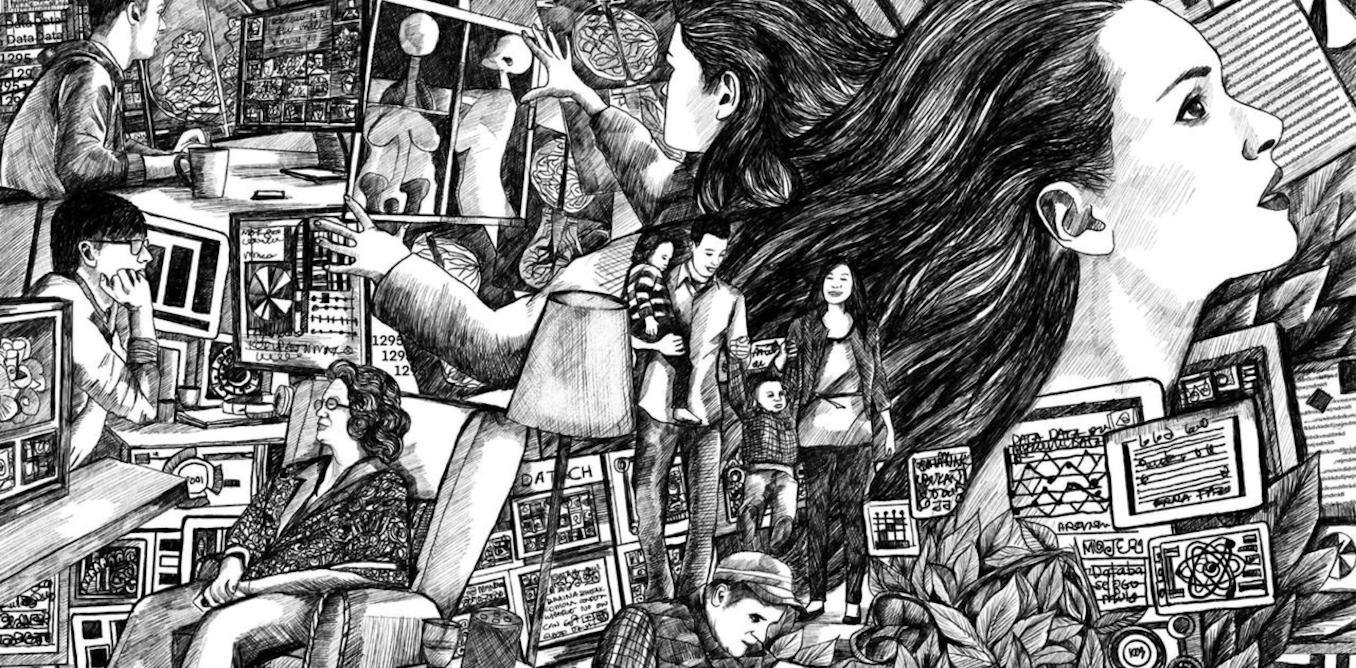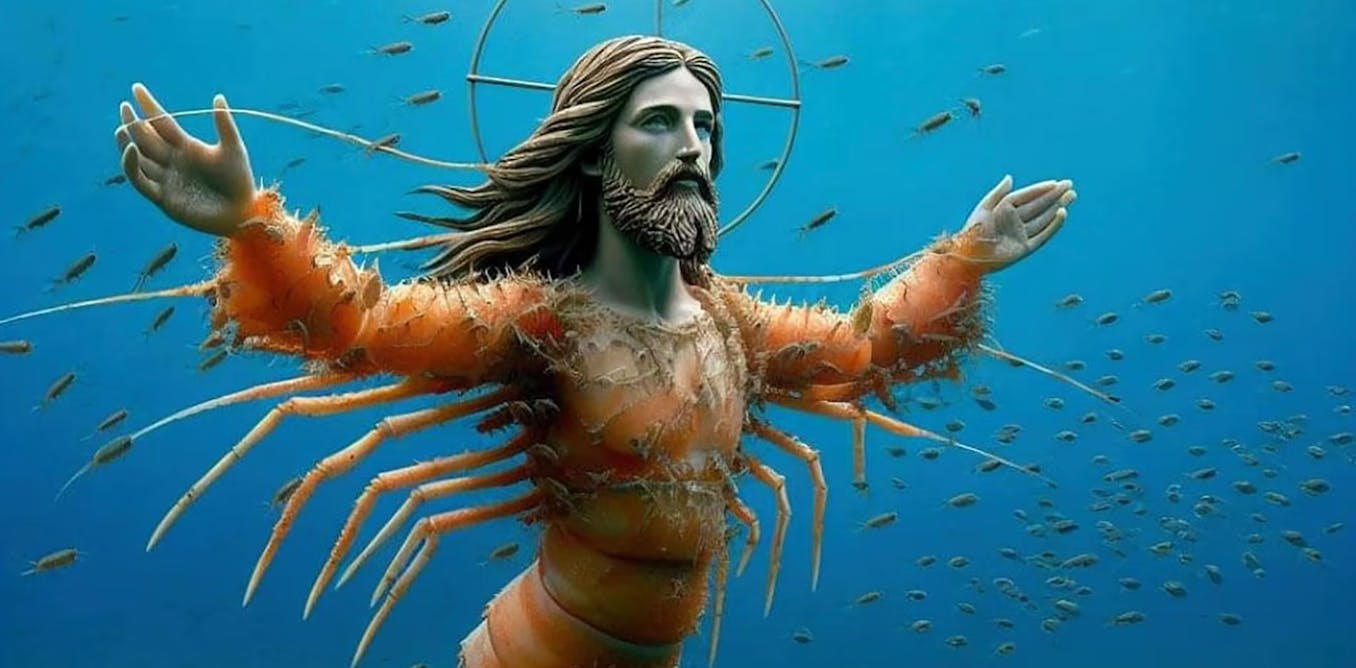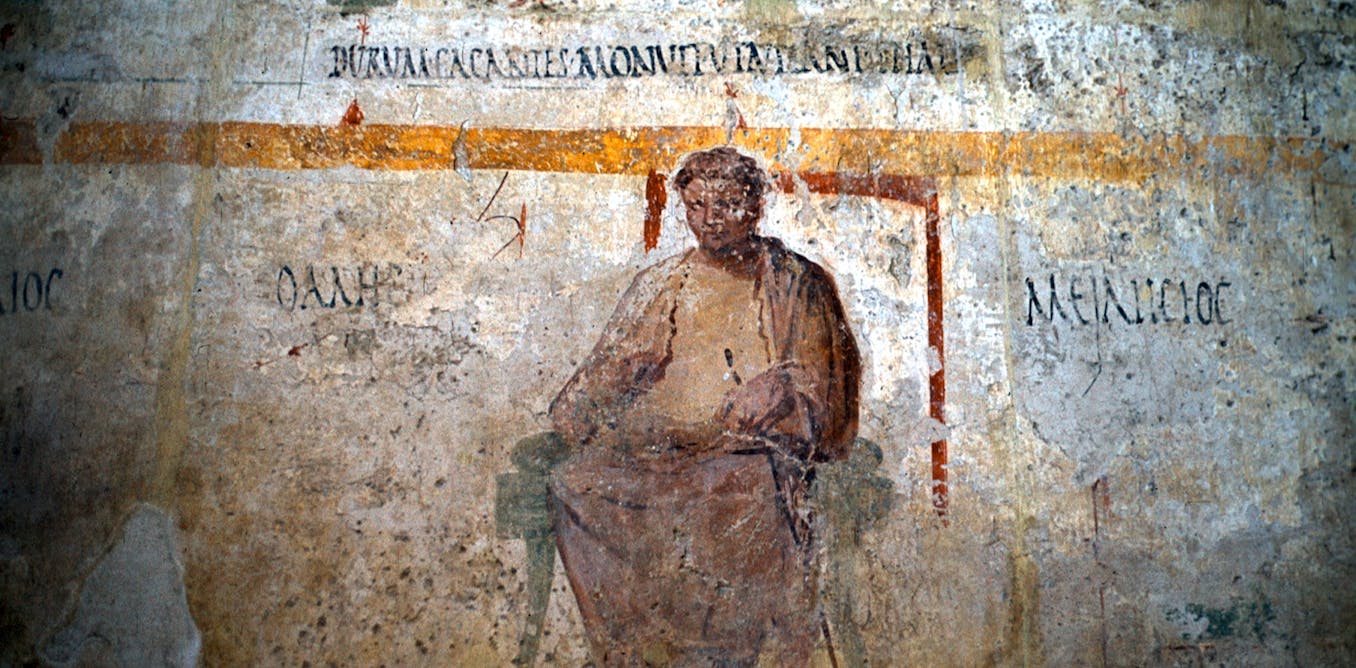After years of searching, the mystery of Noah’s Ark has captivated the world. The recent discovery of what appears to be the remains of the biblical vessel in Turkey has sparked excitement and intrigue among Christians and history enthusiasts alike. The Durupinar formation, near the border of Iran and Turkey, has revealed a boat-shaped structure that aligns with the descriptions of Noah’s Ark in the Bible. The site, dating back to 5500-3000 BC, has unearthed clay-like substances, sea remnants, and ancient seafood, hinting at a link to the legendary flood story.
In a surprising twist, something terrifying has been discovered inside the Ark, shaking the foundation of religious beliefs. The search for Noah’s Ark has spanned centuries, with various theories and findings popping up along the way. From Mount Ararat to Mesha Mountain, the quest for the Ark continues to spark debates and discussions. As new discoveries shed light on this ancient mystery, the world is left wondering what secrets the Ark still holds. Whether fact or fiction, the legend of Noah’s Ark continues to fascinate and mystify those who seek the truth.
Watch the video by Eternity
Video Transcript
After many years of searching, people claim that Noah’s Ark, as mentioned in the Bible, has been found in Turkey For decades archaeologists and experts have been looking for the remains of this interesting wooden structure Christians are celebrating the recent discovery of the Ark because of its significance in the Bible and history overall
But let alone the excitement everybody has for the discovery of the ark, this is not even the biggest news Something Terrifying has been discovered inside of the Ark that has shocked all religious people and you won’t grasp the reality of this until you’ve seen whats next. Chapter 1: The Lost Ark
Near the border of Iran and Turkey, there’s been a big find in archaeology that’s got people all over the world talking and wondering. A group called the Mount Ararat and Noah’s Ark Research Team, made up of people from Turkish and American colleges, has been very carefully digging
At a place called the Durupinar formation. This place is mostly made of a kind of rock called limonite and local stories have long said it might be what’s left of Noah’s Ark, a famous story in the holy books of Christianity, Judaism, and Islam.
The Durupinar site in Turkey is really catching people’s attention because it’s shaped like a boat and it’s about the same size as Noah’s Ark is said to be in the Bible. If you measure it like
We do in the U.S., it’s about 515 feet long, 85 feet wide, and 49 feet high. The stuff you find at the site is really old, from between 5500 and 3000 BC. There’s clay-like stuff, things that came from the sea, and even bits of old seafood. All this makes people think that
A lot of people were there a long time ago and it might be connected to the Noah’s Ark story. For hundreds of years, people have been trying to find Noah’s Ark. They’ve told lots of stories
And thought they found it a few times. Mount Ararat is where the Bible says the Ark ended up, and lots of people have gone there to look. They’ve found bits of wood, seen big structures that look like a boat, and even taken pictures from the air that make them
Think the Ark is there. The Bible says the Ark was the biggest ship around until the 1900s, kind of like the huge ships we have today that cross oceans. But people who study science and old things are careful about these stories. Lots of people in
Western Christianity believe the Ark ended up on Ararat, but the proof isn’t clear. Over time, different stories have been told. Some old stories say bits of the Ark are still around, but others, like one from a guy named Petachiah of Regensburg, say the Ark has broken down.
In the 1800s and 1900s, explorers like James Bryce added to the story. They said they found wood high up on Mount Ararat, which could be from the Ark. But some people aren’t so sure. They say this isn’t enough proof, and the things found in the ground
And studied by scientists haven’t really shown for sure that the Ark was there. The new stuff found at the Durupinar site makes the hunt for Noah’s Ark even more interesting. With new technology and teams from different countries working together,
They’ve found things that could be from the time when the big flood in the Noah’s Ark story happened. But the people who study these things are still being very careful. They say we need to study more and check everything carefully before we
Can say for sure that this place has anything to do with the famous Ark. As dusk fell, the massive Ark whispered its secrets to those willing to listen. Chapter 2: The Keeper of Secrets A very big and unusual project is being carried out in a certain area of Kentucky. A man named Ken
Ham, who started and leads a group called Answers in Genesis, is in charge of making a theme park. This isn’t just any theme park; it’s built around a huge model of Noah’s Ark, and it’s called the Ark Encounter. The park is really big, covering 800 acres, which is even more land than Disneyland
Covers! Every year, about 1.5 million people come to visit this place in Northern Kentucky. The Ark itself is an amazing piece of modern building work. It’s made to be as big as the Bible says Noah’s Ark was: 510 feet long, 85 feet wide, and 51 feet tall. But there’s more to see
Than just the Ark. Inside, there are three levels where people can see detailed displays. These displays aim to make people feel like they’ve gone back in time to when Noah lived. They show what the world might have looked like before the big flood, how Noah and his family might
Have lived inside the Ark, and what happened after the flood. The whole idea is to make the story of Noah’s Ark something you can see, hear, and walk around in, not just read about. Ken Ham has big plans for the Ark Encounter. He wants to keep making
It bigger and better. He’s planning to build a copy of the Tower of Babel and a model of what Jerusalem might have looked like when Jesus was there. The Tower of Babel part is especially exciting because it’s going to have a ride similar to the Haunted Mansion
At Disney. People will sit down and be taken around to see different scenes. The Ark Encounter is a place where there’s always something new happening. Every year, they add new things for people to see and do. There’s an indoor place where you can pet animals, beautiful lights to see at Christmas time,
And even a place where you can walk around and see birds flying above you. The park also does a lot of work behind the scenes. They grow plants in water without soil (that’s called hydroponics) and they have places where people who work there only part of the year can stay.
Creating the Ark Encounter hasn’t been easy. There have been money problems, many discussions with people with different opinions, and a lot of careful planning. To make this big idea a reality, a lot of money had to be invested. They had to sell special bonds, and the local government
Helped by giving tax breaks and making the area better for all the visitors that come. Meanwhile near Mount Ararat, a new discovery was about to shake ancient beliefs. Chapter 3: The Mesha Mountain David Allen Deal’s idea about where Noah’s Ark ended up is different from the usual
Story about Mount Ararat. He thinks it landed on a mountain called Mashu or Mesha Mountain, 17 miles south of Mount Ararat. Deal believes, based on how words are used and stories from old texts like the Epic of Gilgamesh, that the Ark first landed on this mountain at a high spot,
7,400 feet up. He thinks that Noah and his family built the first city after the big flood, called Mesha-Naxuan, right there using parts of the Ark. But as time went by, things like earthquakes and rain made the Ark move down the mountain, and it left marks on the way down.
Deal’s idea is very detailed. He thinks that the people who survived the flood used what was left of the Ark to build their new homes. They used the wood from the Ark to make their houses and the sticky tar to keep their roofs from leaking. The names of places around there,
Like Mesha, which means “pulled out of water,” and Nax-xuan, which people think means “Noah’s Zion,” seem to tell parts of the story of the Ark. There’s also this special thing about the mountain – it has two peaks that look like a wall, called the “wall of heaven.” This
Is mentioned in the Epic of Gilgamesh and is thought to be where Noah’s Ark first landed. Deal found some evidence for his theory when he explored the area in 1996 and 1997. He found old places where people lived and saw the “wall of heaven” at the high spot where he thinks
The Ark first landed. The way the names of the places around Mashur Dag Mountain fit together seems to support the story of the Ark landing there. Deal also looked at old pictures and statues that show characters from the story of Genesis in the Bible, especially focusing on a
Woman named Naamah, who is linked to the mountain where the Ark is thought to have landed. He thinks these old artworks connect old stories with the story of the Ark in the Bible. While Deal’s idea is very interesting and he has a lot of details and reasons for his theory,
It’s just one of many ideas about where Noah’s Ark might have ended up. Even though Deal has a lot of evidence and his thinking makes sense, scientists are still not totally sure, and they say we need to study more and look more closely at everything before we can really say
If these ideas are true or not. When it comes to figuring out things from a long time ago, especially when they’re connected to old stories and what people believe, it’s important to be really careful and check everything very thoroughly. Secrets whispered from Mesha Mountain, promising to reveal a story lost in time.
Chapter 4: An Eternal Dispute The tale of Noah’s Ark is a story that both Jewish and Christian traditions share, but the way people understand and accept its history and religious meaning has often been different. This has led to lots of discussions and sometimes arguments between
These two religions. Early writers who were Jewish or Christian, like Flavius Josephus, really believed the Ark was real. However, most scientists today don’t agree with the idea of a huge flood covering the whole world or the Ark being a real thing. Some experts who study history
Think that maybe big floods that happened a long time ago in the Middle East, like the flood in the Persian Gulf or the Black Sea flood, might have been the inspiration for these old stories. Talking about Noah’s Ark is just a small part of a much bigger conversation about how Judaism and
Christianity are related. These two religions have a long, complicated history together. This relationship has been looked at even more closely after really big historical events, like the Shoah (Holocaust). People who study the Bible have had a lot of intense debates about how the New Testament
Describes Judaism. They’re trying to figure out if the parts that seem against Judaism are actually a core part of these religious texts or if they’ve just been misunderstood over time. This debate is really strong when it comes to the texts of Luke-Acts. The writings of Luke don’t clearly say
Bad things about Judaism, but they describe it in a way that’s complex and not easy to understand. Over the years, the stories and teachings in these religious texts have been looked at from many angles. Different religious leaders, scholars, and followers have offered their own interpretations.
These interpretations are influenced by their personal beliefs, cultural backgrounds, and the times they live in. As a result, the understanding and teaching of the story of Noah’s Ark and its significance vary widely within and between Jewish and Christian communities. Researchers and historians dig into the past,
Looking for clues that can either support or challenge the traditional understandings of these stories. As new discoveries are made and old assumptions are questioned, the dialogue between Judaism and Christianity regarding their shared yet distinct heritage evolves. This dynamic interaction reflects the broader human quest for meaning, connection to
The past, and understanding of the sacred texts that have guided these faiths for centuries. Furthermore, the religious talks also cover how people understand the idea of ‘covenants’ in holy writings. The word ‘covenant’ is understood and translated in many different ways in the
Hebrew Bible (part of the Jewish faith) and the New Testament (part of the Christian faith). This shows how the connection between these two religions has changed and developed over a very long time. This topic isn’t just about language or religious ideas. It’s also about bigger
Issues. These include how closely connected the Christian beliefs are with the Jewish traditions and whether the promises from God are meant for all kinds of people and for all times. The debate around the term ‘covenant’ highlights the depth and complexity of religious texts and
How different groups interpret them. It raises important questions about how past agreements between God and people are seen today. Are these agreements meant to last forever, or do they change as time goes on and new situations arise? Also,
Who is included in these agreements? Is it just a specific group of people or everyone? These questions aren’t easy to answer. They need a deep understanding of religious teachings, an appreciation of historical contexts, and a willingness to see things from different perspectives. Religious leaders, scholars, and believers spend a lot of time studying,
Discussing, and sometimes even arguing about these topics. They look at ancient texts, compare different translations, and try to understand the intentions and situations of the people who wrote these texts long ago. In a clash of faith, a surprise secret showed up that might change what we know. Chapter 6: New Secrets Uncovered
Chapter 5: Humanity Longest Search The tale of Noah’s Ark is famous all over the world, but it’s not the only story about a big flood. Different cultures have their own flood stories, and even though each one has special details, they all share some common themes. The Eridu Genesis, which comes from Mesopotamia,
Is one of the oldest flood stories. People think it influenced other flood stories in that area, like the Gilgamesh flood story and the Genesis flood story in the Hebrew Bible/Christian Old Testament. These stories all highlight how important it is to be thankful,
To remember where you come from, and to show respect and humility toward the gods. When we look at the flood stories from China and Egypt, we find characters like Nu Wa and the sun god Ra playing major roles in either causing big floods or surviving them. In these stories,
Only a few people survive the flood, and they often have some special task or help from the gods to start the human race again. We find similar ideas in stories from ancient Greece, where Deucalion and Pyrrha are saved by a chest that ends up on a high mountain, and
In ancient Hawaii, where Nu’u builds a big canoe to escape a big flood and ends up on Mauna Kea. The Epic of Gilgamesh, which is one of the oldest stories we know of, tells about the adventures of Gilgamesh and includes a story about a flood that’s very
Much like the story of Noah. Both stories talk about the gods deciding to get rid of humans, choosing one family to survive, building a huge boat, and saving animals. But there are also differences that show the different cultures and religious beliefs these stories
Come from. For example, the story of Noah says he survives because he’s a good person, while the Gilgamesh story says Utanapishtim survives because he’s wise and the gods favor him. Another old flood story is the Atrahasis epic, which was found in the 19th century. It’s even
Older than the Gilgamesh story and shares a lot of the same parts with the Gilgamesh story and the story of Noah. These include the gods being angry, people surviving, and the world starting over after a huge flood. The Atrahasis story and the Genesis
Flood story have a lot in common, like a warning about the flood seven days ahead, building a boat, and sending out birds to find dry land after the flood. These flood stories from different places and times all weave together into a rich collection
Of tales. Even though they come from different cultures and have their own unique details, they all talk about the power of the gods, the survival of a few people, and a new beginning after a big disaster. This shows us that the idea of a great flood wiping out the world and
Starting over is a theme that many cultures have thought about and told stories about. Humanity’s quest under the stars hinted at uncovering our deepest roots. Chapter 6: A True Story? For many years, the tale of Noah’s Ark has captured the imagination of people worldwide,
Mixing elements of legend, faith, and historical accounts. The story from the Bible about Noah’s Ark is the most famous, but ancient societies like those in Mesopotamia, China, Egypt, and Greece also have their own stories about big floods.
These stories might point to a common memory of a big flood in the past or a natural human way of making sense of big disasters by telling stories about them. In Mesopotamia, ancient writings such as the Eridu Genesis and the Epic of Gilgamesh share stories
That are very similar to the biblical story of Noah. They talk about a huge flood, one person or family chosen to start humanity again, and a boat that saves them and different kinds of animals. These tales focus on the idea of gods judging humans, the importance of behaving well, and life
Starting anew. Another old story from Mesopotamia, the Atrahasis epic, adds more details to the flood story. It explains why the flood happened and what the gods thought about humans at that time. Even though these old stories all have similar parts, the way people understand
Them and the messages they get from them are different. This shows the rich variety of ways human societies have tried to make sense of nature and the idea of a higher power’s will. What’s interesting is that there are real signs in the earth’s history of big floods
Happening. For example, the Black Sea flood is a well-known event where the sea level rose and caused a huge flood around 7,500 years ago. This event, and others like the flooding of the Mediterranean sea and changes in river valleys in ancient Mesopotamia, might be the
Real events behind these flood stories and could explain why so many different cultures have them. While we haven’t found proof of a flood as big as the one described in the story of Noah’s Ark all over the world, it’s possible that big floods in certain places a long time
Ago inspired these lasting stories. Whether these stories are based on real events or not, they remain an important part of human culture. They show how our ancestors tried to understand and give meaning to the world they lived in. The story of Noah’s Ark holds a special place in religious writings and ancient legends,
Showing its importance in different cultures. In the Bible, Noah is shown as a good man who God chooses to build an ark. This ark saves a pair of each kind of animal, along with Noah’s family, from a flood sent by God to clean the earth of its wrongdoings. This story is not just
About Noah’s strong faith but also about a new beginning for people and the continuation of life. Each new clue blurred the line between legend and fact, edging us closer to the truth. Chapter 7: A Religious Heritage
The story of Noah and his ark is a key part of religious teachings, offering lessons on faith, obedience, and the relationship between humans and the divine. It’s a narrative that’s been passed down through generations, resonating with people’s spiritual beliefs and their
Sense of morality and justice. The story’s enduring presence in various forms of art, literature, and cultural expressions reflects its deep impact on human thought and society. Moreover, the tale of Noah’s Ark serves as a bridge between the past and the present, connecting modern-day individuals with their ancestral heritage. It provides a
Window into the ancient world, allowing people to explore the beliefs, values, and struggles of their forebears. Through this story, individuals can reflect on the universal themes of survival, redemption, and the human spirit’s resilience in the face of adversity. The story of Noah’s Ark is often pictured as a huge boat,
Built with specific measurements known as cubits, and made according to a divine plan. The story goes into great detail about how the Ark was made, including what it was made from and what the inside looked like. This isn’t just a story about building a big boat;
It’s also a symbol of hope and a source of light during the scary and dark times of the flood. This tale of Noah and his big boat is similar to other flood stories from ancient places like Mesopotamia, Greece, and Egypt. These stories usually talk about a
Big flood caused by gods, one person or family chosen to start humanity again, and a special boat or ark made to save them. The fact that this kind of story shows up in so many different cultures might mean that there’s a shared understanding or memory of
Really big floods from long ago. It could be that these stories are based on actual floods that happened, like the Black Sea flood, which was about 7,500 years ago. What’s really interesting is that the story of Noah in the Bible is a lot like the Epic of
Gilgamesh, a much older story from Mesopotamia. Both stories tell about gods who are angry with people, the building of a huge boat to survive a flood, and sending out birds to look for dry land. When people found the Epic of Gilgamesh and saw how similar it was to the Bible’s story of Noah,
It made them think differently about where the Noah story came from. It suggested that these ancient stories of floods might all be connected or have influenced each other in some way. The similarities between Noah’s Ark and the Epic of Gilgamesh open up a
Lot of questions about how stories are shared and change over time. It seems like these flood stories could be a way for different cultures to make sense of the big, scary floods that they experienced or heard about. These stories help people understand their world
And deal with the fears and uncertainties that come with big disasters like floods. In addition, these flood stories might be more than just a way to explain natural disasters. They also teach important lessons about how people should live, how they should treat each other,
And how they should respect the power of nature and the divine. In these stories, the flood often comes because the gods are unhappy with how people are behaving. The person or people who survive the flood, like Noah in the Bible or Utnapishtim in
The Epic of Gilgamesh, are usually saved because they are good in some way. This sends a message about the value of being good and doing what’s right. The ark, known to have three levels and many big rooms, was a home for all sorts of animals. As the
Flood waters rose, the ark floated above the drowned world, becoming a sign of hope. After it rained non-stop for 40 days, Noah released a dove, which later came back with an olive leaf, showing that life was starting to come back. When the water finally went down,
Noah, his family, and the animals left the ark and stepped onto dry ground. God then showed a rainbow as a promise, saying that he would never flood the whole earth again. The story of Noah’s Ark is very important for its religious,
Historical, and moral lessons. It’s a symbol of God’s kindness, the value of life, and the need to protect all kinds of living things. In Christianity, the ark is also seen as a sign pointing to the saving work of Christ. While no one knows what happened to the ark after
The flood, recent digs in Turkey have made people very interested and full of guesses. Mount Ararat, especially, has been the center of many searches for the ark. The Noah’s Ark Scan Project, which uses high-tech 3D scanning, has found something big in the
Mountains of Turkey. This discovery has made both people who study the Bible and scientists very curious because of its special shape in the land. Found first in 1959 by Ilhan Durupinar, a captain in the Turkish Army, this place has made people wonder and study it for a
Long time. The people working on the Noah’s Ark Scans project have found a shape in the mountains of Turkey that fits really well with how Noah’s Ark is described in the Bible. The Bible Archaeology Search and Exploration Institute thinks that the ark might have ended
Up on Mount Elor, a mountain that goes from Armenia to Afghanistan. This idea comes from finding what seem to be old bits of sea wood and sea creatures way up high in the area. These finds are very interesting because they suggest that these places,
Which are now high and far from the sea, might have once been under a huge sea or ocean. This supports the story of a big flood as told in the Bible. The meaning of these discoveries is huge. It’s not just important for people interested in
Religion and history but also for understanding how the Earth’s land and weather have changed over time. If the findings of the Noah’s Ark Scan Project turn out to be true, they could link us directly to one of the most well-known and lasting stories from long
Ago. This would give us knowledge about the past that mixes faith, history, and science. Yet, the rabbit hole goes even deeper. Chapter 8: God’s Authority Leonard Simmons, a British soldier, gathered many old objects while he was in Iraq after World War
II. Among these was a special tablet from Assyria that gives a different picture of Noah’s Ark, making people question the usual image of the ark. According to this old writing, the ark wasn’t the familiar boat shape we usually think of. Instead, it was round,
Like the coracles that were used a lot on the rivers of Mesopotamia back then. These round boats were really good for getting through the wild waters of the flood, showing the cleverness of the people who lived a long time ago.
This 4,000-year-old tablet has brought new and exciting insights into the tale of Noah’s Ark, hinting that this well-known story might have been influenced by older flood stories from ancient Mesopotamia. Irving Finkel, who works at the British Museum, realized how important this
Tablet was and translated what was written on it. The story on this tablet is a lot like the story of Noah from the Bible, even saying that animals came onto the ark two by two. This discovery doesn’t just offer a new way to think about what the ark looked
Like. It also shows us how long ago people started telling stories and passing down their knowledge from one generation to the next. Finkel’s work with this tablet led to more investigation into the story, and there were even plans to build
The ark again using the old instructions to see if it could really float. However, Finkel himself had his doubts about whether the ark was a real thing. He saw the story more as a powerful tale that has stayed in our memory and traditions rather than a true event from history.
The story of Noah’s Ark is much more than just a story from the past. It’s a deep and meaningful narrative that talks about themes like being saved, God’s help, and God keeping his promises. The biblical tale of Noah isn’t just about
Surviving a huge flood. It’s a symbol of God stepping in to help, save, and show kindness. In the Bible, the Ark is more than just a boat that keeps life safe; it’s a sign of God’s kindness and the way to be saved. Noah, who was favored by God, was given a
Way to escape the coming disaster. This was an act of kindness from God not just to Noah but to all living things. This story is seen as a hint of the even bigger rescue that would come later through
Jesus Christ. It’s like a promise between God and people. The Ark stands as a sign of safety, protection, and being saved, shining like a light of hope in the middle of chaos. The finding of the Ark and the research around it mix religious beliefs with the
Excitement of finding things from the past. This combination of faith and science gives us a peek into our shared history and shows how old stories still have a big impact today. It’s a reminder of the big themes we all go through—being saved, getting another chance,
And always looking for God’s kindness. This is why the story of Noah’s Ark goes beyond just one religion. It touches people from all sorts of backgrounds and beliefs and keeps giving us lessons about faith, following what’s right, and the never-ending love of the Creator.
How does this blend of modern attractions and ancient mysteries shape our understanding of history, belief, and the pursuit of knowledge? What will the next chapter of this age-old tale reveal to us? If you’re intrigued by this quest through time and belief,
Don’t forget to like and subscribe for more captivating journeys into our past! Share your thoughts and theories in the comments – let’s unravel these mysteries together! How do these stories change what we think about history and belief? What will we
Find out next? Hit like and subscribe! And click this next video to dive even deeper.
Video “What They FOUND Inside Noah’s ARK in Turkey TERRIFIES The World!” was uploaded on 02/11/2024 to Youtube Channel Eternity
























